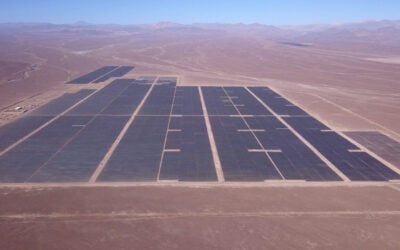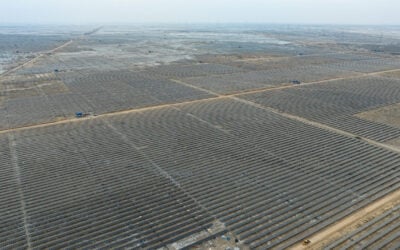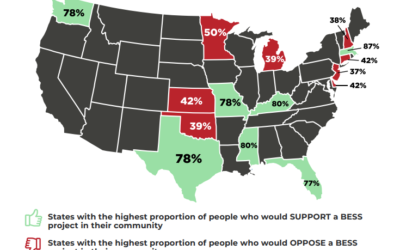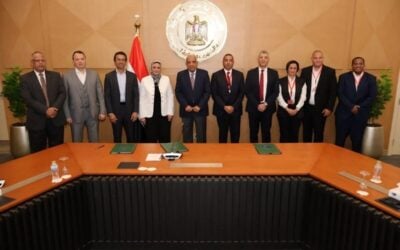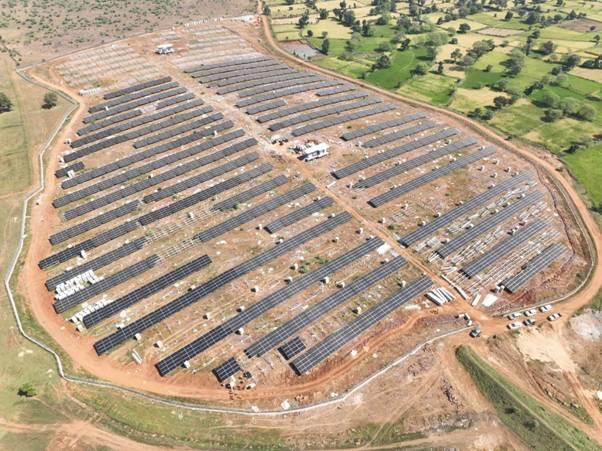
India’s renewable energy-adjacent battery storage sector rolls on, with new procurement and regulatory moves from state-run agencies SECI and CEA.
Solar Energy Corporation of India (SECI) has launched a tender for 1,200MW solar PV generation hybridised with 600MW/3,600MWh of battery storage and connected to the Inter-State Transmission System (ISTS).
SECI, an Indian government enterprise administered by the Ministry of New and Renewable Energy (MNRE) to advance the National Solar Mission, issued a request for selection (RfS) last week (19 June) for the competitive solicitation process.
As with other solar-plus-storage tenders hosted by SECI, successful bidders will enter into a 25-year power purchase agreement (PPA) with the agency for their build-own-operate (BOO) projects.
Enjoy 12 months of exclusive analysis
- Regular insight and analysis of the industry’s biggest developments
- In-depth interviews with the industry’s leading figures
- Annual digital subscription to the PV Tech Power journal
- Discounts on Solar Media’s portfolio of events, in-person and virtual
SECI will then sell the power generated and stored by the projects to designated Buying Entities. Adding battery storage to the projects will enable power to be supplied during peak demand periods.
That means sellers will be contracted to deliver clean energy to buyers for six hours of each day’s peak times—from 6pm each evening until 9am the following morning. At each of the six hours selected by the Buying Entity, the batteries must be capable of continuously discharging for an hour.
Developers must be able to supply 3,000kWh of energy for every MWac of installed solar PV capacity during those stipulated peak hours.
A pre-bid meeting for the tender takes place on 10 July 2025, and bidding will open on 21 August.
Tenders driving procurement, driving down prices
Tenders from SECI and other national and regional government agencies have been credited with driving forward procurement in India’s nascent energy storage sector.
At a recent workshop event hosted by the Central Electricity Authority (CEA), SECI staff presented on BESS tenders, tariff trends, and the agency’s experiences with BESS projects in operation and under construction.
According to a CEA briefing on the event, SECI highlighted that its Solar+BESS tender tariffs declined from IR6.99/unit in August 2018 to IR3.09/unit by September last year.
In a recent Guest Blog for Energy-Storage.news, India Energy Storage Alliance (IESA) president Debmalya Sen wrote about the transformative impact of the three main types of tender to include energy storage, which are: standalone BESS, solar-plus-storage and Firm, Dispatchable Renewable Energy (FDRE).
Sen noted that SECI has hosted two Solar+BESS tenders to date, awarding 1,200MW solar PV and 1,200MWh BESS in March 2024 and 2,000MW PV and 4,000MWh BESS in August 2024.
Despite this success, it remains early days for India’s solar-plus-storage tenders—as shown in Debmalya Sen from IESA’s chart below, only 200MW of solar PV and 200MWh of battery storage has been put into operation so far through Solar+BESS tendering.
A further 1.2GW PV and 1.2GWh BESS capacity is in construction and 3.4GW PV to 5.4GWh awarded but not yet built—which shows also that the average duration of projects is increasing. Some tendered projects have also been cancelled, showing that there have been challenges along the way.

CEA issues safety regulations, recommends incentives for component production in India
In other news from India, the CEA has just released new regulations for safety and electricity supply to battery storage installations.
Set to go into effect on publication in the authority’s Official Gazette, the regulations set out rules for aspects of the installation and operation of BESS assets, including battery management system (BMS) and power conversion system (PCS).
What the rules include
There is a set of general rules and further sets of more specific rules. General rules include the need for fire and explosion testing to be carried out to relevant standards, requirements that chargers are designed for the specific battery chemistry used, the integration of two-fault tolerance into design to prevent catastrophic failures, along with requirements for PCS and BMS to play key roles in safe monitoring and control.
The more specific requirements include container-level explosion-proof design, 7.5-metre clearances between BESS enclosures and exterior walls or roof overhangs, and mandated large-scale fire testing (LSFT), ventilation, hazard detection and suppression, security systems and emergency shutdown technology.
CEA will also require third-party fire safety auditing with reports to be submitted to relevant Fire Inspectors, and for trained professionals to be on-hand as provided by the appropriate government authority in the event of fires.
The new rules come amid a wave of calls for BESS safety standards in European Union (EU) territories and, most recently, in the UK. The US is considered to have a more developed codes and standards space, and the forthcoming edition of its National Fire Protection Association (NFPA) standard NFPA 855 includes requirements on LSFT—the latter of which many companies in the industry have already adopted as per best practice.
The CEA, which directs electricity sector activities in India, has forecasted that India needs considerable energy storage capacity, including a combined total of 74GW/411GWh from both batteries and pumped hydro energy storage (PHES) by 2031-2032, to meet its goals of 500GW non-fossil fuel electricity by 2030 and the stay on track for a net zero electricity system by 2070.
At the recent workshop event, CEA staff and attendees recommended that BESS’s value be better realised in delivering a broader range of applications for the grid, including frequency regulation ancillary services and voltage support.
It was also recommended that a national testing and certification lab should be set up for BESS to ensure compliance with standards and boost the credibility of domestically manufactured systems. Other recommendations included the establishment of incentives for critical component production, such as BMS, fire protection equipment, liquid-cooling thermal management and BESS containers.


